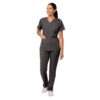Discover how to choose the right home blood pressure monitor. Learn about types, features, and tips for accurate readings to manage your health effectively
Introduction
Monitoring your blood pressure at home can be a vital part of managing your health, especially if you have hypertension or other cardiovascular concerns. However, with the variety of home blood pressure monitors available, choosing the right one can feel overwhelming. This guide will help you understand the types of monitors, their features, and how to select the best option for your needs.
What Is a Blood Pressure Monitor and Why Do You Need One?
A blood pressure monitor is a device that measures the pressure of blood in your arteries as your heart pumps it around your body. Regular monitoring can provide critical insights into your cardiovascular health, enabling you and your healthcare provider to make informed decisions about your treatment plan. Home monitors are increasingly recommended by doctors, as they allow for more frequent and accurate tracking of blood pressure over time. Types of Blood Pressure Monitors
1. Arm Blood Pressure Monitors
Arm monitors are considered the gold standard for home blood pressure measurement. They typically provide more accurate readings than wrist monitors. There are two types of arm monitors:
- Aneroid Monitors: These require manual inflation using a bulb and a stethoscope. While they are generally less expensive, they can be more challenging to use and may be less durable.
- Digital Monitors: These automatically inflate and display readings on a digital screen, making them easier to use. Many digital monitors also come with additional features like memory storage and irregular heartbeat detection.
Pros:
- More accurate readings
- Recommended by healthcare professionals
Cons:
- May not fit all arm sizes
- Can be uncomfortable for some users
2. Wrist Blood Pressure Monitors
Wrist monitors measure blood pressure at the radial artery in your wrist. They are portable and easy to use, but their accuracy can be influenced by body position.
Pros:
- Lightweight and portable
- Easier to use for some individuals Cons:
- Less accurate than arm monitors
- Sensitive to body position and movement
Key Features to Consider
Also read: Comprehensive Pain Management Strategies for Expecting Mothers
When choosing a blood pressure monitor, consider the following features to ensure you get the most out of your device:
- Irregular Heartbeat Detector: This feature alerts you to potential arrhythmias, providing valuable information for your healthcare provider.
- Multi-User Memory: If multiple people will be using the device, a monitor that can store readings for different users can be beneficial.
- Large Display: A monitor with a clear, large display makes it easier to read the results, especially for those with visual impairments.
- Cuff Size Options: Ensure the monitor comes with a cuff that fits your arm comfortably. A cuff that is too tight or loose can lead to inaccurate readings.
Calibration and Accuracy
It’s important to ensure your blood pressure monitor is calibrated correctly. Most manufacturers recommend servicing and calibrating your monitor every two years. Also, bring your monitor to your healthcare provider to compare its readings with those taken in the office. This step helps ensure you’re getting accurate measurements at home.
Smartphone Apps and Technology
Some monitors come with smartphone connectivity, allowing you to track your readings over time through an app. While some apps offer additional functionality, like reminders for taking measurements, it’s essential to check their reliability. Always prefer monitors with FDA approval for medical accuracy.
Shopping Tips
- Consult Your Doctor: Before purchasing, discuss your needs with your healthcare provider. They can recommend specific models based on your health status.
- Consider Your Budget: High-end models may not necessarily provide better accuracy than more affordable options. Many reliable monitors cost between $40 and $75.
- Ease of Use: Choose a monitor that is simple to operate and read. Testing a few models in-store can help you find one that feels comfortable.
- Size Matters: Ensure the cuff fits your arm properly. An ill-fitting cuff can lead to inaccurate readings.
Takeaways
Home monitors are invaluable for managing your health, providing continuous insights into your cardiovascular status. When selecting a monitor, prioritize accuracy, comfort, and essential features tailored to your needs. By keeping these guidelines in mind, you can make an informed choice that enhances your home monitoring experience.
Frequently Asked Questions (FAQs)
Which arm should blood pressure be taken on, left or right?
The American College of Cardiology and the American Heart Association recommend measuring blood pressure in both arms during your first visit. If there’s a discrepancy, use the arm with the higher reading for future measurements.




































